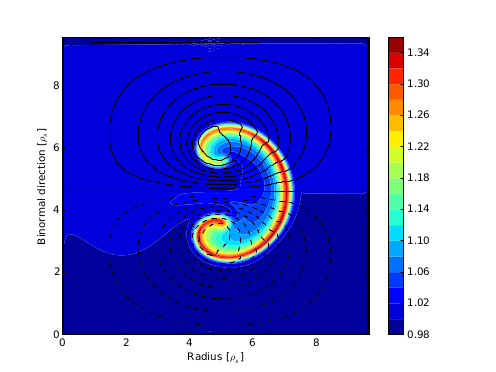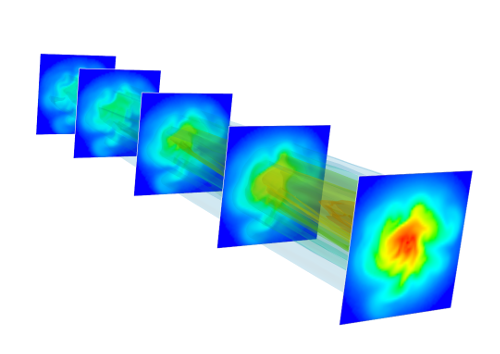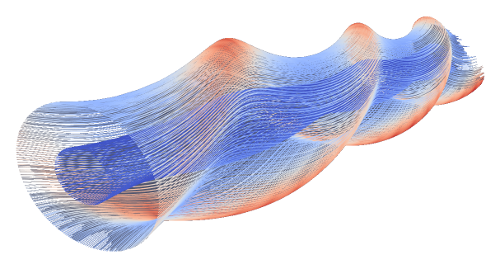Applications
-

At the edge of tokamak (and other) plasmas, isolated “blobs” of plasma are often observed, typically moving outwards at a few hundred meters per second. These blobs are elongated along the magnetic field, forming long filaments. These single filaments have a surprisingly complicated range of nonlinear behaviour.
The blob2d model simulates isothermal blobs with a sheath closure, and includes example inputs to get started. This is quite a good place to start learning how to use BOUT++ with a “real” physics model.
-

ELMs are instabilities driven by pressure gradients and currents at the edge of high performance tokamak plasmas. They result in repetitive bursts which could result in large heat heat loads on the walls of large tokamaks, and so are a concern for ITER.
The elm-pb model included in the BOUT++ repository solves a 4-field model for pressure, vorticity, the parallel component of the plasma velocity and electromagnetic potential. It has been used for studies of ELM eruptions, mainly in circular geometry plasmas.
-

The Hermes model is being developed to study the interaction between relatively small-scale turbulence and large-scale features, in particular the neutral gas and fuelling of the plasma.
-

The Hermes model combines transport and turbulence in one self-consistent model. It is under development, but includes electric fields and drifts, neoclassical transport, neutral gas interactions, and instabilities including ballooning modes and resistive drift waves which lead to turbulent transport. It can be run in a “transport” mode in 2D (axisymmetric) geometry with specified cross-field diffusion coefficients, or in 3D with cross-field transport determined by the turbulence.
-

Stellarator devices like Wendelstein 7-X confine plasmas in a twisted 3D magnetic field, whose shape makes modelling more challenging than in tokamaks. Addressing this is an area of active development for BOUT++, mainly using the Flux Coordinate Independent (FCI) approach.
-
Incompressible flow in 2D of two fluids with different densities and viscosities. Buoyancy is included, but not surface tension (yet).
-
Simulates merging of two filaments of plasma through magnetic reconnection, using a 2D zero-beta model in Cartesian geometry. The vorticity and electromagnetic potential are evolved with a constant density and temperature. The magnetic field consists of a constant “toroidal” field, and a time-evolving “poloidal” field.